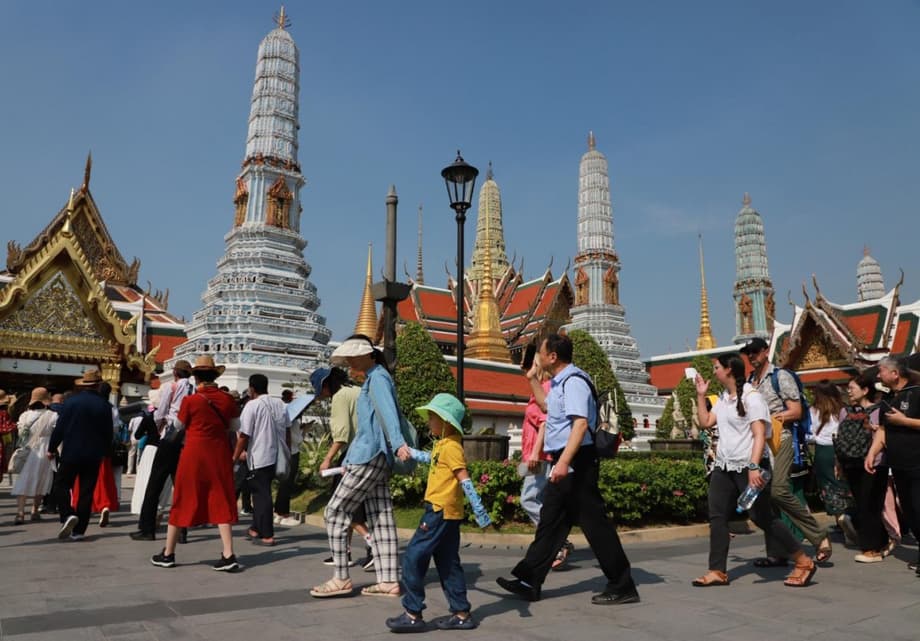Regional tension reshapes travel choices
China’s warning for citizens to avoid travel to Japan has rattled Asia’s tourism map and opened a window for Thailand’s carriers and hospitality sector. The advisory followed comments by Japanese Prime Minister Sanae Takaichi on potential military involvement if conflict erupts over Taiwan. Within days, Chinese travelers began scrapping Japan itineraries, group tours paused promotions, and tourism stocks in Tokyo turned lower. Thailand, now in its fourth quarter high season, is positioning for a possible redirection of Chinese demand, even as Chinese arrivals have trailed expectations this year.
Airlines and hotels in Thailand saw a lift in investor sentiment as the prospect of diverted visitors grew. Before the pandemic, Chinese travelers were Thailand’s largest inbound market, and the country’s airport, airline, and hotel operators are keen to capture any swing in bookings. Executives caution, however, that the scale and duration of any shift will depend on how long tensions last and how quickly airlines can adjust schedules.
What triggered the warning against Japan?
Beijing’s alert cited safety concerns after remarks in Tokyo about Taiwan. Chinese carriers quickly announced free refunds or rebooking for Japan flights through year end. The cancellations were swift and sizable. One veteran aviation analyst estimated about 491,000 Japan bound tickets were canceled since the weekend after the warning, roughly one third of bookings to Japan for that period. On some days, cancellations outpaced new bookings by a margin rarely seen since early 2020.
Public statements hardened. At a regular briefing, Chinese Foreign Ministry spokeswoman Mao Ning urged a reversal by Tokyo. She said Japan must change course after remarks that Beijing views as provocative on the Taiwan question.
Japan must retract its erroneous remarks, repent and change course, offering a clear and satisfactory answer to the Chinese people.
Chinese travelers have started pivoting to other destinations. Booking data in China show South Korea rising to the top for outbound trips. Strong demand is also visible for Thailand, Hong Kong, Malaysia, Singapore, and Vietnam. The pace of group tour cancellations to Japan has been particularly sharp, while some independent travelers still weigh whether to proceed or switch plans.
Thai carriers move to capture redirected Chinese traffic
Thai AirAsia has rebalanced its network this year as Chinese demand lagged. Flights to and from China currently account for roughly 5 percent of the airline’s international services, down from more than 20 percent before the pandemic. Capacity has been shifted toward India and Thailand’s domestic market, where the airline retains a large share. The carrier expects performance to improve through the peak travel months, targeting a load factor of at least 80 percent in the fourth quarter after a slower third quarter complicated by weaker regional arrivals and domestic uncertainty.
Santisuk Klongchaiya, chief executive of Thai AirAsia, said the situation could favor Thailand if travelers choose alternatives to Japan, but he is not rushing to make forecasts.
Thailand could benefit as Chinese nationals choose other destinations such as Thailand, but it is still too early to predict how much demand will grow.
The airline plans to add two to three aircraft to operations, bringing 60 of 62 planes into regular service, while postponing delivery of four to six new aircraft from December 2025 to the second quarter of 2026. The deferral gives the carrier time to assess demand while global supply chains and maintenance slots remain tight for narrowbody jets.
Thai Lion Air banks on secondary Chinese cities
Thai Lion Air is leaning into Chinese secondary cities. The carrier launched new flights in October to Chongqing and Tianjin, bringing its network to nine routes into China during the high season. Executives anticipate strong load factors on China flights, helped by two way travel that includes more Thai visitors heading to China under a visa free scheme. The airline also expects full domestic planes during the festive period and holiday stretches that crowd the year end calendar.
Nuntaporn Komonsittivate, head of commercial at Thai Lion Air, said the current climate is encouraging travelers to consider alternatives to Japan.
Amid China and Japan tensions, Chinese tourists may opt for other destinations in Asia, such as Thailand and Vietnam.
Both Thai AirAsia and Thai Lion Air, together with other members of the Airlines Association of Thailand, have urged the government to bolster tourism by delaying increases in aviation fees and reviving a free domestic flight giveaway promotion for foreign tourists. Executives argue that soft costs and simple promotions can quickly nudge demand while airlines redeploy capacity.
Will Thailand see a surge in Chinese arrivals?
There is room to grow. Thailand welcomed about 11 million Chinese visitors in the last full year before the pandemic. This year, Chinese arrivals are still below that benchmark, at roughly 3.87 million so far. Even a modest redirection of travelers who were headed to Japan could help fill seats and rooms during the high season. The scale of Japan bound cancellations suggests a meaningful pool of undecided travelers, especially among groups. The extent to which Thailand benefits will depend on airfare levels, hotel availability in key cities, and the speed at which carriers can add seats from Chinese gateways.
Travel patterns are not uniform. Group tours tend to adjust fastest to official advisories, which explains the immediate drop in Japan packages and charter flows. Independent travelers often make later decisions and may still visit Japan, particularly if fares fall or if Tokyo emphasizes safety. Many may also choose short haul alternatives. Thailand’s combination of well known beach destinations, city shopping, and extensive domestic connectivity puts it high on the shortlist for those reshuffling plans.
Within Thailand, major tourism hubs such as Bangkok, Phuket, Chiang Mai, and Pattaya could capture most of the redirected demand. These markets already have established Chinese language services, large hotel inventories, and tour products tailored to first time and repeat Chinese visitors. The key will be reliability, clear safety communication, and reasonable prices during peak weeks.
Government and regulator policy moves
Thai airlines want policy help to support a potential uptick. The Airports of Thailand fee schedule and other aviation related charges have been in focus, with carriers asking for delays to planned increases. Industry leaders have also floated a return of a popular promotion that offered free domestic flights to foreign visitors who booked international trips into Thailand. The Civil Aviation Authority of Thailand has asked the Finance Ministry to consider excise tax relief to lighten airline operating costs, a step that could aid pricing if demand accelerates.
At the same time, the regulator is pressing forward on a sustainability agenda. Eight Thai carriers signed a memorandum of understanding with the Civil Aviation Authority of Thailand to boost the use of sustainable aviation fuel in line with the International Civil Aviation Organization target of net zero emissions by 2050. The framework aims for a 0.5 to 1 percent blend of sustainable fuel next year and at least 1 percent by 2027. During 2028 to 2030, regulators plan to monitor outcomes, then from 2031 require all airlines to use a sustainable aviation fuel blend on flights departing Bangkok’s Don Mueang and Suvarnabhumi airports.
Air Chief Marshal Manat Chavanaprayoon, director general of the Civil Aviation Authority of Thailand, said the agency would match climate goals with affordability.
The authority will maintain a sustainable fuel plan that is reasonable for airline expenses and passenger fares so that every stakeholder benefits.
What SAF targets mean for costs and fares
Sustainable aviation fuel is a drop in replacement for conventional jet fuel that can cut lifecycle emissions, but it typically costs more than kerosene. Early blend requirements are small, so near term price effects should be limited. The long planning horizon gives fuel suppliers and airlines time to scale supply, explore local production, and reduce costs through larger contracts. Regulators will still need to balance climate progress with the cost sensitivity of short haul leisure travel that dominates regional demand from China.
Risks and constraints to watch
Several variables could limit how much redirected demand reaches Thailand. Aircraft capacity is not unlimited, and obtaining extra planes, crews, or airport slots is not simple during a peak season. Thai AirAsia’s decision to defer new aircraft deliveries into the second quarter of 2026 reflects industry wide caution about growing too quickly. Airlines must also juggle maintenance schedules and the availability of spare parts that have constrained global fleets since travel rebounded.
Domestic factors matter as well. Thailand experienced a soft patch in regional arrivals during the third quarter, and political or border tensions in mainland Southeast Asia have occasionally affected traveler confidence. Any rapid thaw between Beijing and Tokyo would likely stabilize Japan bookings and reduce the redirection effect. For now, airlines are calibrating schedules city by city rather than betting on a long disruption.
What airlines and hotels are telling investors
Thai tourism exposed shares rose as the Japan warning hit headlines. Airports of Thailand, Bangkok Airways, Central Plaza Hotel, and the Erawan Group all moved higher in recent trading, reflecting investor expectations that rerouted Chinese travelers could lift volumes. Brokerage research flagged Central Plaza Hotel and Erawan Group as favored picks for the sector based on a potential recovery through 2026.
Market optimism does not guarantee a revenue burst. Analysts will watch Chinese booking curves into December and the Lunar New Year period, looking for a sustained pickup in flights and hotel occupancy. If fares stay firm and airlines add capacity to secondary Chinese cities, momentum may build into early 2026. If not, the rally could prove temporary.
How travelers may respond
Chinese travelers typically weigh safety messaging, visa convenience, flight time, price, and shopping value. A weak yen had boosted Japan’s appeal this year, but official advisories tend to outweigh currency benefits for many families and tour groups. Thailand’s competitive airfares and abundant room supply make it an easy swap for travelers who want a short haul holiday without complicated logistics.
Group tour organizers have already reacted by canceling December packages to Japan and pausing new marketing. Independent travelers are taking a more mixed approach. Some still plan to go to Tokyo or Osaka, while others are looking at Seoul, Bangkok, or Hong Kong. A Chinese university senior described the ripple effect on personal plans after the advisory.
We originally planned to travel to Osaka before the Spring Festival of 2026. We are now discussing changing to a tour to Hong Kong and Macao.
The Bottom Line
- China’s safety advisory against travel to Japan triggered large cancellations, with about 491,000 Japan bound tickets scrapped in days.
- Thai airlines see an opening to capture redirected travelers, led by Thai AirAsia and Thai Lion Air, which are emphasizing China routes during the peak season.
- Thai AirAsia currently allocates about 5 percent of international capacity to China, down from more than 20 percent before the pandemic, and targets at least 80 percent load factor in the fourth quarter.
- Thai Lion Air now operates nine routes into China, including new services to Chongqing and Tianjin, and expects strong loads supported by two way travel.
- Regulators are backing the sector with requests for tax relief and a push for sustainable aviation fuel, including small blends next year and mandatory use for Bangkok departures from 2031.
- Thai tourism exposed stocks gained on expectations of a shift in Chinese travel, with airports, airlines, and hotel groups among the beneficiaries.
- South Korea has emerged as a top alternative for Chinese travelers, while Thailand, Hong Kong, Malaysia, Singapore, and Vietnam are also seeing interest.
- The scale of Thailand’s benefit depends on how long tensions persist, airline capacity, pricing, and service quality during the high season.
- Capacity constraints and aircraft delivery delays could limit rapid growth, and any de escalation between Beijing and Tokyo could slow the redirection.












